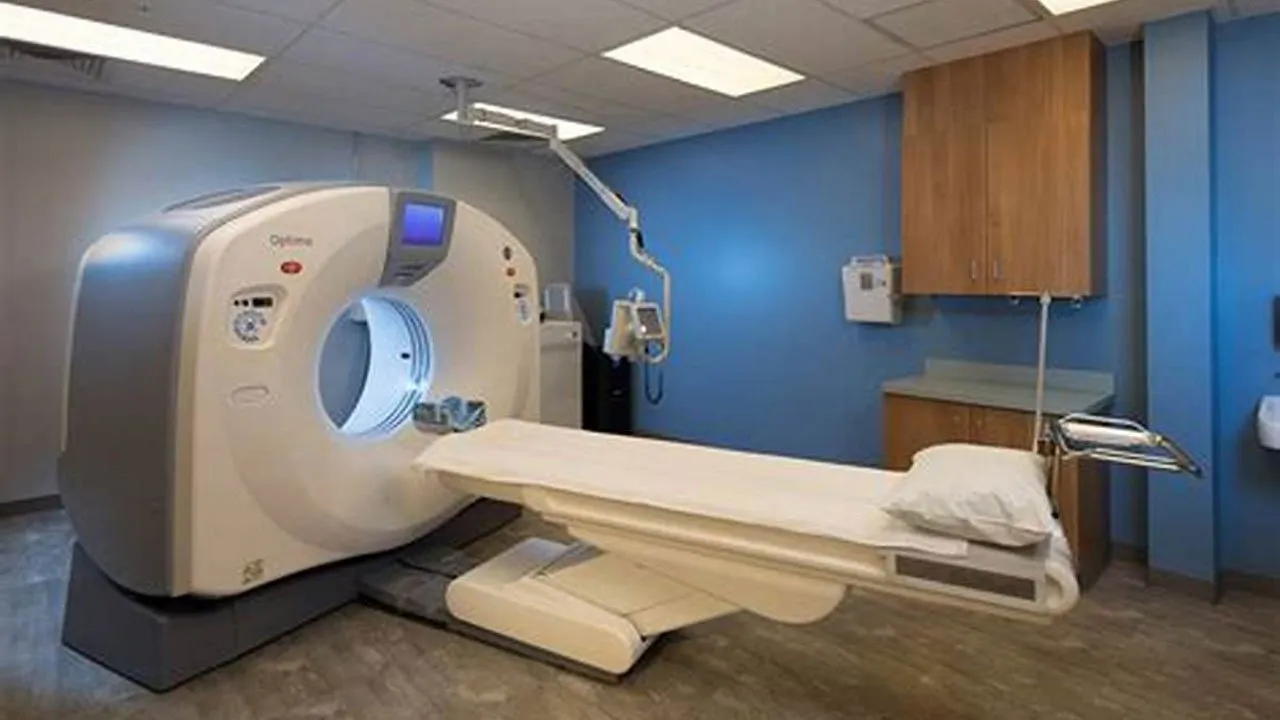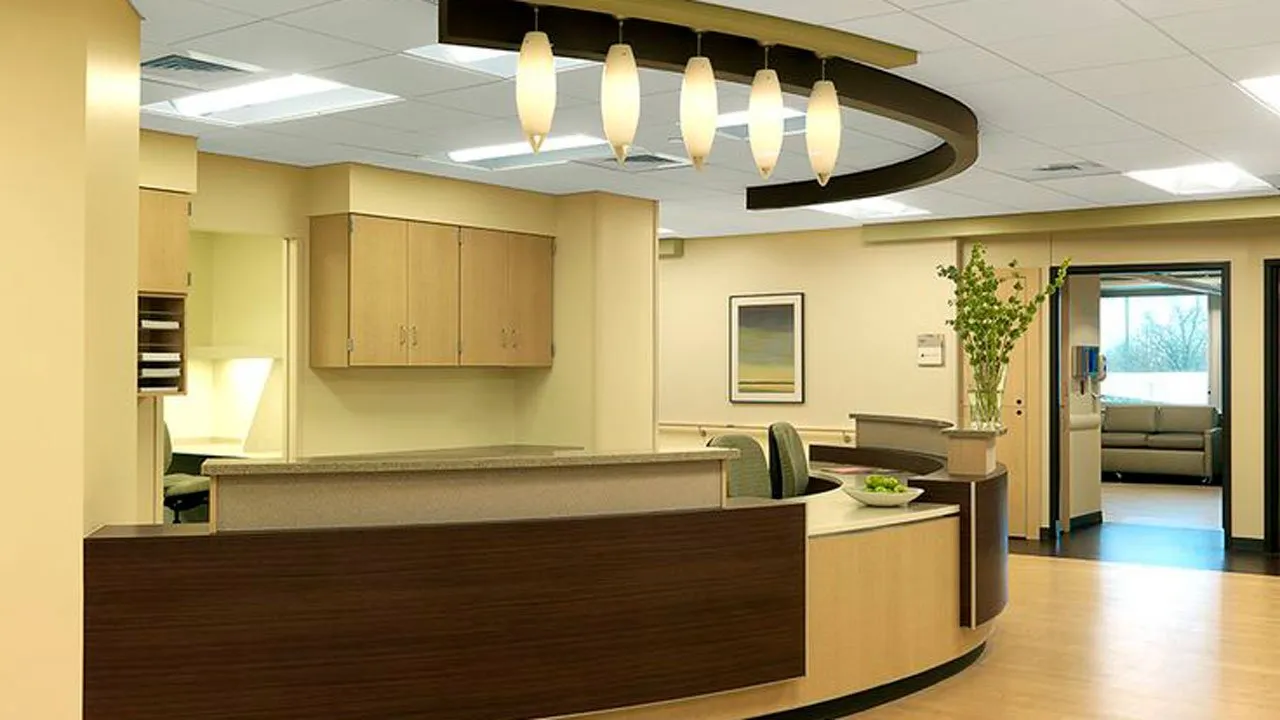Radiology Center, Healthcare Facilities

A radiology center, also known as a radiology clinic or imaging center, is a healthcare facility specializing in medical imaging and diagnostic services. Radiology centers play a vital role in the healthcare system by providing a wide range of imaging techniques to aid in the diagnosis, treatment, and monitoring of various medical conditions. Here are key characteristics and aspects of radiology centers:
- Medical Imaging Services: Radiology centers offer a variety of medical imaging services, including X-rays, computed tomography (CT) scans, magnetic resonance imaging (MRI), ultrasound, mammography, nuclear medicine, and fluoroscopy.
- Advanced Technology: These centers are equipped with state-of-the-art imaging equipment and technology to ensure accurate and high-quality diagnostic images.
- Board-Certified Radiologists: Radiology centers have board-certified radiologists and highly trained technologists who perform and interpret the imaging studies, providing expert analysis and diagnosis.
- Diagnostic Imaging: Radiology services are used for the detection, diagnosis, and evaluation of various medical conditions, including fractures, tumors, infections, and organ function.
- Screening and Preventive Imaging: Some radiology centers offer screening and preventive imaging, such as mammography for breast cancer screening, or whole-body scans for early disease detection.
- Interventional Radiology: Certain centers have interventional radiologists who perform minimally invasive procedures using image-guided techniques, such as angioplasty, embolization, and biopsies.
- Emergency and Trauma Imaging: Radiology centers provide essential imaging services to support emergency and trauma care, assisting with timely diagnosis and treatment.
- Women’s Health Imaging: Many centers offer specialized women’s health services, including mammography, breast ultrasound, and bone density scans for osteoporosis screening.
- Pediatric Radiology: Radiology centers may have specialized pediatric radiologists who are trained to perform and interpret imaging studies for children, ensuring a child-friendly and safe environment.
- Patient Comfort: Radiology centers prioritize patient comfort and safety, providing a soothing and comfortable environment for patients undergoing imaging procedures.
- Quick Turnaround: These centers typically provide rapid image results, allowing healthcare providers to make timely diagnoses and treatment decisions.
- Second Opinions: Patients often seek second opinions from radiologists when interpreting complex or critical imaging findings.
- Electronic Health Records (EHR): Radiology centers often maintain electronic health records, allowing for seamless communication and data sharing with other healthcare providers.
- Patient Education: Radiology centers offer patient education on the imaging process, safety, and the importance of following the care provider’s recommendations.
- Referrals: Radiology centers work closely with healthcare providers to facilitate imaging referrals, ensuring that the appropriate tests are ordered and results are communicated effectively.
Radiology centers are essential in modern healthcare, as they provide critical diagnostic tools that enable healthcare providers to assess and treat various medical conditions effectively. The accuracy and quality of diagnostic images from these centers are integral to patient care and medical decision-making.
Advanced Imaging Technologies
A radiology center is a medical facility that specializes in diagnostic imaging services. These centers are equipped with advanced imaging technology and staffed by radiologists and other healthcare professionals who specialize in interpreting and analyzing medical images. Radiology centers play a crucial role in the diagnosis and treatment of various medical conditions by providing detailed images of the internal structures of the body.
Here are some key aspects of radiology centers:
Diagnostic Imaging: Radiology centers offer a wide range of diagnostic imaging services, including X-rays, computed tomography (CT) scans, magnetic resonance imaging (MRI), ultrasound, and nuclear medicine scans. These imaging techniques help in visualizing different parts of the body and detecting abnormalities or diseases.
Radiologists: Radiologists are medical doctors who specialize in interpreting medical images. They work closely with other healthcare professionals to analyze the images and provide accurate diagnoses. Radiologists play a crucial role in identifying and characterizing various conditions, such as fractures, tumors, infections, and organ abnormalities.
Specialized Imaging: Radiology centers may have specialized imaging services to cater to specific medical needs. For example, some centers may have dedicated mammography units for breast imaging, interventional radiology services for minimally invasive procedures, or pediatric radiology services for imaging children.
Image-Guided Procedures: In addition to diagnostic imaging, radiology centers also offer image-guided procedures. These procedures involve using medical imaging techniques to guide minimally invasive treatments, such as biopsies, drainages, and injections. Image guidance allows for precise targeting of the affected area, reducing the need for more invasive surgical procedures.
Collaboration with Healthcare Providers: Radiology centers work closely with other healthcare providers, including primary care physicians, specialists, and surgeons. They provide imaging reports and collaborate in the management of patients’ conditions. Radiologists may also consult with other healthcare professionals to determine the most appropriate imaging modality for a specific medical question.
Quality and Safety: Radiology centers prioritize patient safety and adhere to strict quality standards. They follow radiation safety protocols to minimize radiation exposure during imaging procedures. Additionally, radiology centers may participate in accreditation programs to ensure compliance with industry standards and best practices.
Patient Experience: Radiology centers strive to provide a comfortable and patient-centered experience. They may offer amenities such as comfortable waiting areas, friendly staff, and efficient scheduling to minimize wait times. Some centers also provide patient education materials to help individuals understand the imaging process and prepare for their appointments.
It’s important to note that the specific services and capabilities of radiology centers may vary. It is recommended to consult with a healthcare provider or visit the website of a specific radiology center to learn more about the services they offer.
How do radiology centers ensure patient safety and quality standards?
Radiology centers prioritize patient safety and adhere to strict quality standards through various measures. Here are some ways in which radiology centers ensure patient safety and maintain quality standards:
Radiation Safety Protocols: Radiology centers follow radiation safety protocols to minimize radiation exposure during imaging procedures. This includes using appropriate shielding techniques, optimizing imaging parameters to reduce radiation dose, and employing advanced imaging technologies that provide high-quality images with lower radiation doses.
Accreditation Programs: Many radiology centers participate in accreditation programs to ensure compliance with industry standards and best practices. These programs, such as those offered by the American College of Radiology (ACR), evaluate the quality and safety of imaging facilities based on criteria related to equipment, personnel qualifications, image quality, radiation safety, and patient care.
Quality Assurance Programs: Radiology centers implement quality assurance programs to monitor and improve the quality of their imaging services. This involves regular performance evaluations of imaging equipment, image quality assessments, and ongoing training and education for radiologists and technologists.
Compliance with Regulatory Guidelines: Radiology centers adhere to regulatory guidelines set by government agencies, such as the Food and Drug Administration (FDA) and the Nuclear Regulatory Commission (NRC). These guidelines ensure the safe and appropriate use of medical imaging equipment and radioactive materials.
Continuous Professional Development: Radiologists and technologists in radiology centers engage in continuous professional development to stay updated with the latest advancements in imaging technology and best practices. This includes attending conferences, participating in educational programs, and maintaining certifications.
Patient Education: Radiology centers provide patient education materials to help individuals understand the imaging process and prepare for their appointments. This includes information about the specific imaging procedure, any necessary preparations, and what to expect during and after the procedure. Clear communication with patients helps ensure their comfort and cooperation during the imaging process.
Collaboration with Healthcare Providers: Radiology centers work closely with other healthcare providers, including primary care physicians, specialists, and surgeons. They provide imaging reports and collaborate in the management of patients’ conditions. Radiologists may also consult with other healthcare professionals to determine the most appropriate imaging modality for a specific medical question.
It’s important to note that these measures may vary slightly between different radiology centers. However, the overall goal is to prioritize patient safety, maintain high-quality imaging services, and provide accurate and timely diagnoses.
Sources:
Radiological Society of North America (RSNA): “RadiologyInfo.org”
American College of Radiology (ACR): “Patient Center”







